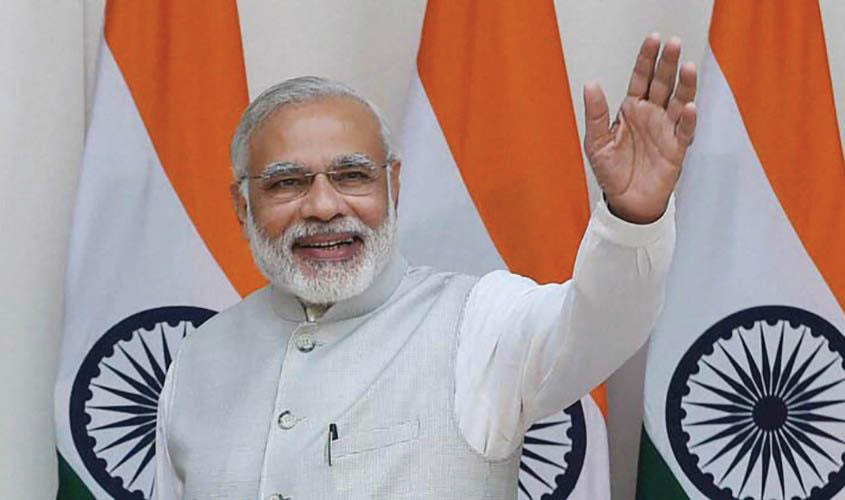There is widespread speculation as to who would lead the opposition charge against Narendra Modi when the Lok Sabha elections take place next year. On Saturday, the Bharatiya Janata Party-led NDA government completed four years in office and preparations, on both sides, are in full swing for the final showdown. Therefore, it is to be expected that with each passing day, the political momentum would pick up and the outcome of the Assembly polls later in the winter in Rajasthan, Madhya Pradesh and Chhattisgarh would set the agenda for next summer’s final.
Political analysts often make the mistake of conjecturing the name of the candidate who would spearhead the challenge to the incumbent government. It is evident that most of the regional leaders, who are considered Prime Minister material, may not even be in the reckoning when the time arrives. It is not easy to surmount someone like Modi, who is a tireless 24×7 campaigner and a seasoned politician down to the last letter. In fact, he draws his energy from his public interactions and excels in changing the narrative if he sees it is not swinging to his advantage. He had ably demonstrated this trait when he flipped the political discourse in Karnataka from the one between Modi and Siddaramaiah to that of Modi vs Rahul Gandhi. This, without a shadow of doubt, facilitated the BJP to emerge as the single largest party.
In the past, there have been several elections when polls have been held without any specific leader taking control of the campaign against a sitting Prime Minister or the government. In 1977, everybody was clueless as to who would take on a commanding personality like Indira Gandhi. The mood of the nation was decisively against the Congress, and yet when the time came, Morarji Desai got the final nod, though both Charan Singh and Jagjivan Ram were equally confident of realising their lifelong ambition.
Similarly, once again, in 1989, when Rajiv Gandhi’s popularity had waned and it was virtually well-known that the Congress might not be able to retain its government, there were multiple contenders for the top post. In 1984, Rajiv had become Prime Minister with the largest ever mandate received by any political party following Indira Gandhi’s gory assassination, but paradoxically, within a span of five years found himself struggling against opposition onslaughts, particularly on the Bofors gun deal.
Ignoring advice from his benefactors, Rajiv refused to advance the polls to prevent his detractors from re-grouping and therefore had to face the people’s wrath. The over 400-seat advantage was reduced to merely 196 seats, and though Congress emerged as the single largest party, Rajiv acknowledged that the mandate was against him and decided to sit on the opposition benches. What followed was vicious power play between three principal contenders—Vishwanath Pratap Singh, Chandrashekhar and Devi Lal. V.P. Singh initially received the crown with the assistance of both the Left parties and the BJP, who offered outside support to him.
The 1991 outcome demonstrated that the people preferred the Congress over others, and though after Rajiv’s assassination it was not clear as to who would lead the Congress, the voters threw their weight behind the party to enable it to form a coalition government. Rao, the ultimate Prime Minister, rose to the position after Sharad Pawar decided to withdraw his claim, thereby ensuring a unanimous election.
In 1996, people voted against the Congress, and the BJP became a major beneficiary by obtaining the maximum number of seats in the Lok Sabha under the overall leadership of Atal Behari Vajpayee, who became the Prime Minister for solely 13 days. He thus paved the way for both H.D. Deve Gowda and Inder Kumar Gujral, strengthening the belief that more than support, one needed to have destiny on one’s side to occupy the august office. Subsequently, the complexities of the coalition governments were in full view as Vajpayee served six and a half years, over two broken terms, as the head of government.
In 2004, no one in their wildest dreams could have imagined that Manmohan Singh would replace Vajpayee; Sonia Gandhi had opted for this reluctant and most academically qualified politician as her primary choice. He continued in office for ten years, the longest after Jawaharlal Nehru and Indira Gandhi.
The short point is that people vote for and against parties, not necessarily to elect Prime Ministers. The majority of times, governments have fallen on account of strong and defined negative vote. This virtually has happened in every poll after 1977, with so far 1984 being the sole exception. In 2009, the Congress managed to increase its tally before UPA-II commenced its tenure. Thus if the people decide to vote against the BJP and the NDA, it does not have to be considered as a vote in somebody else’s favour.
However, it is perceptibly clear that Modi is not an easy opponent to deal with. Undoubtedly, he is the undisputed mass leader of the country, and has an extremely committed following. Therefore, the opposition’s collective efforts to dislodge him may prove to be insufficient. The 2019 polls would be Modi vs Modi. In 2019, the electorate would determine whether Modi of 2014 was able to deliver on his promises. The vote would be, either for or against Modi.
Between us.

